This week we attended Automate, a robotics trade show in Chicago focused on manufacturing and fulfillment. As we explored the show floor, we saw a number of robots able to work next to humans for an affordable cost of $30-$40k each. Most vendors claimed less than a 12 month payback period. Automation is now in reach for many businesses, and they are slowly becoming comfortable implementing robots, in part for the cost advantage and part out of necessity to find labor.
We left the show with two questions. First, are we too conservative to believe it will take 30 years for 70% of human jobs to be replaced by robots? Short answer: we’re optimistic and should have a better idea of how quickly automation will come over the next few years. Second, how comfortable are consumers allowing robots to do certain jobs? To address this question, we surveyed 500 average consumers in the US and asked them to rate their comfort level with robots performing 12 specific tasks.
Survey methodology. We asked survey takers across a mix of age and income demographics to rate their comfort level with robots performing various tasks on a scale of 1-5: 1 being extremely uncomfortable, 3 being neutral, and 5 being extremely comfortable. We surveyed jobs in four categories: time-consuming chores, transportation, personal/family livelihood, and professional services.
Time-consuming chores. We found general acceptance in robots performing daily, relatively safe, time-consuming chores such as vacuuming, mowing the lawn, or preparing food. Of all of the four categories of jobs we surveyed, the time-consuming chore category was the most positively viewed. This may be because these tasks have low downside if a robot fails to do them well; you just end up with a poorly vacuumed house, a butchered lawn, or a bad meal. The 30-44 age bracket, or loosely late millennials, consistently indicated the highest levels of comfort with this category (and most categories), while the 18-29 demo, or early millennials, surprisingly saw less benefit to robot vacuums or meal-makers – perhaps because many in this demo don’t perform the tasks themselves (see tables below).
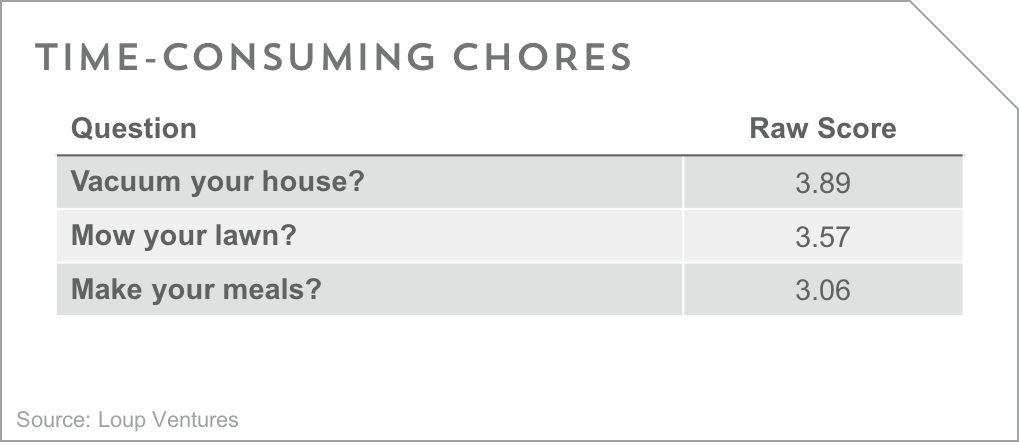
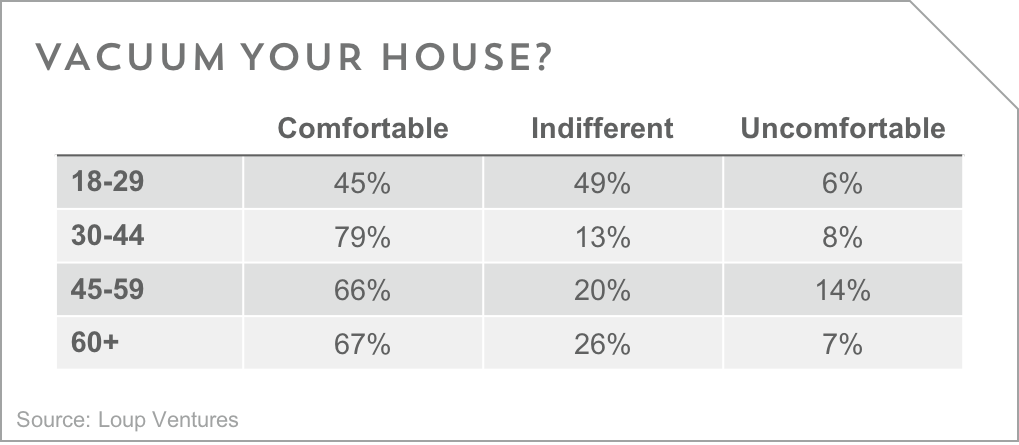
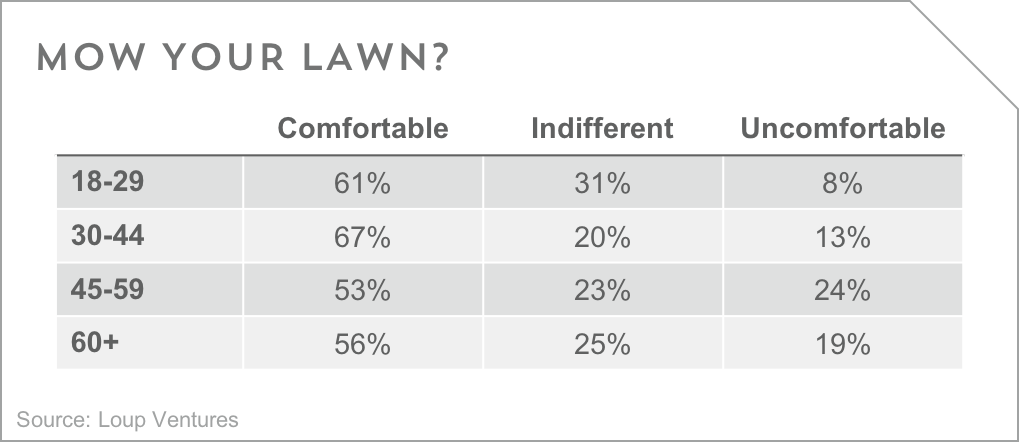
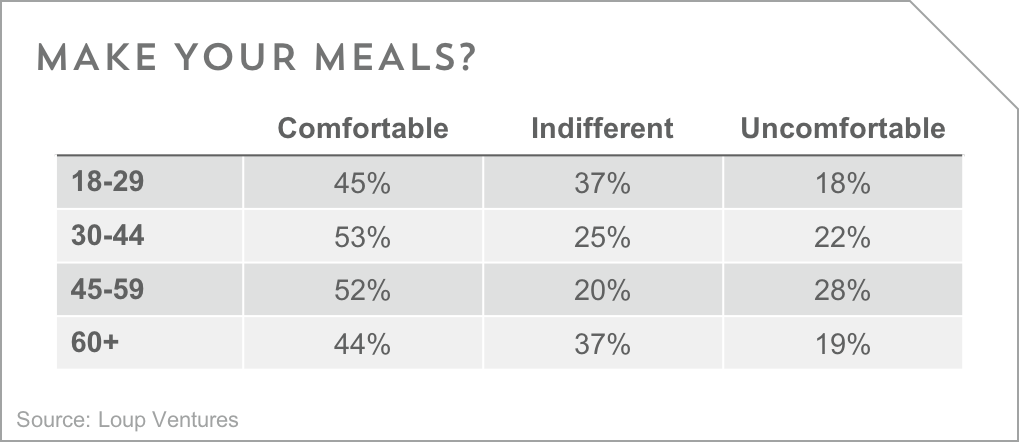 Transportation. Our survey results indicated a general indifference to a robot controlling a subway or train ride, but less comfort with driving a car or piloting a plane. We believe this relates to the relative risk of downside due to robotic failure as mentioned in the prior section. It’s hard to imagine a catastrophic subway accident, but easy to imagine a major car accident or downed plane. Interestingly, the 40-59 demo, or Gen X, was the most uncomfortable of the demo groups, with on average 65% of responses indicating uncomfortable or extremely uncomfortable. We suspect relatively risk-averse Gen X upbringings and presence of young or teenage children may account for these results.
Transportation. Our survey results indicated a general indifference to a robot controlling a subway or train ride, but less comfort with driving a car or piloting a plane. We believe this relates to the relative risk of downside due to robotic failure as mentioned in the prior section. It’s hard to imagine a catastrophic subway accident, but easy to imagine a major car accident or downed plane. Interestingly, the 40-59 demo, or Gen X, was the most uncomfortable of the demo groups, with on average 65% of responses indicating uncomfortable or extremely uncomfortable. We suspect relatively risk-averse Gen X upbringings and presence of young or teenage children may account for these results.
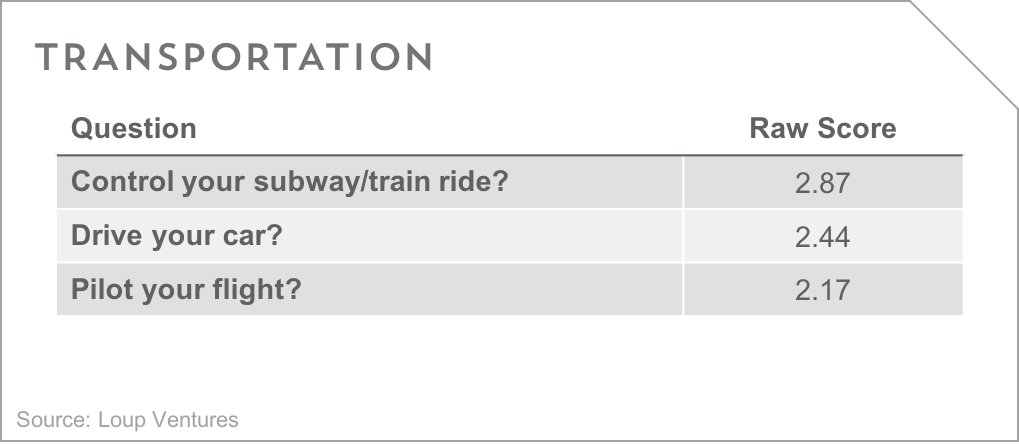
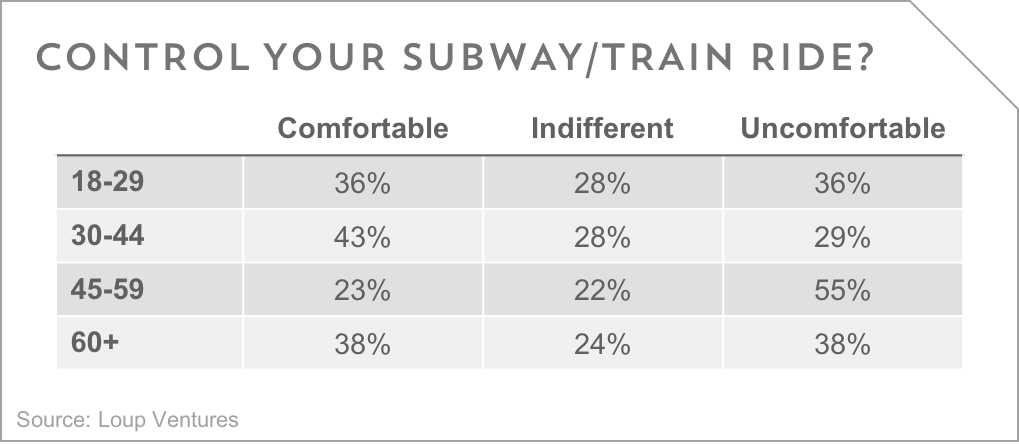
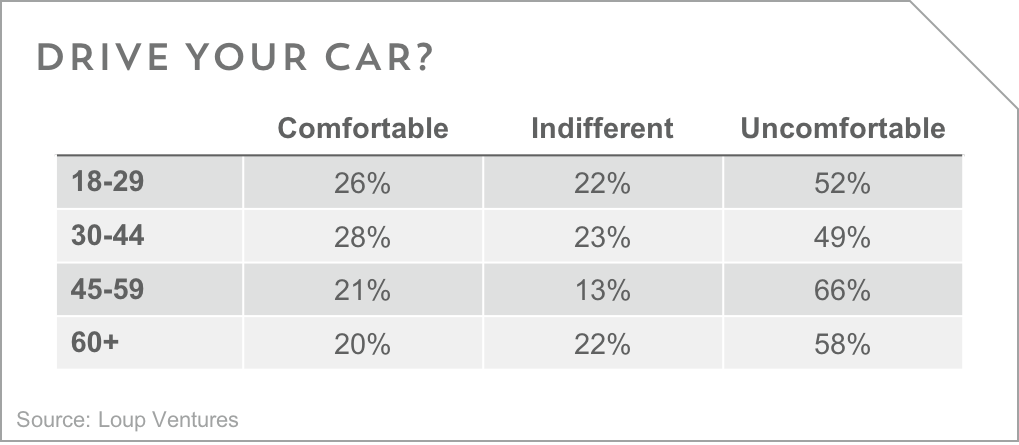
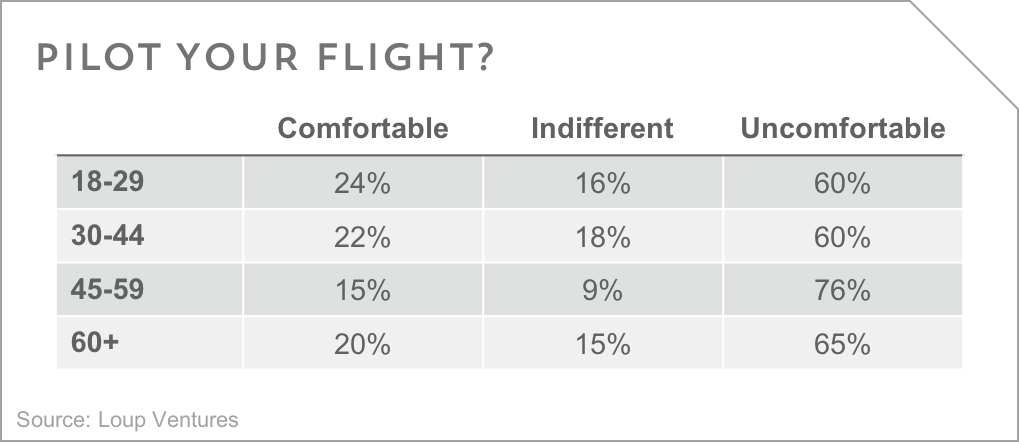 Personal/family livelihood. Given the discomfort in letting a robot drive a car, it’s not surprising that most people aren’t ready to let robots do even more personal tasks like perform surgery or babysit. Again, downside risk to robotic failure is very apparent for both of these tasks, thus the lean toward discomfort. While babysitting requires empathy, which we view a one of the three key advantages humans hold over robots in addition to creativity and community, robots should theoretically be better surgeons than humans. Robo-surgeons have steadier and more precise instruments and can process more data about the body simultaneously than a human surgeon. Consistent high levels of discomfort to this category are seen across all demographics. Robo-babysitters scored an average of 20 points higher on the discomfort scale vs robo-surgeons.
Personal/family livelihood. Given the discomfort in letting a robot drive a car, it’s not surprising that most people aren’t ready to let robots do even more personal tasks like perform surgery or babysit. Again, downside risk to robotic failure is very apparent for both of these tasks, thus the lean toward discomfort. While babysitting requires empathy, which we view a one of the three key advantages humans hold over robots in addition to creativity and community, robots should theoretically be better surgeons than humans. Robo-surgeons have steadier and more precise instruments and can process more data about the body simultaneously than a human surgeon. Consistent high levels of discomfort to this category are seen across all demographics. Robo-babysitters scored an average of 20 points higher on the discomfort scale vs robo-surgeons.
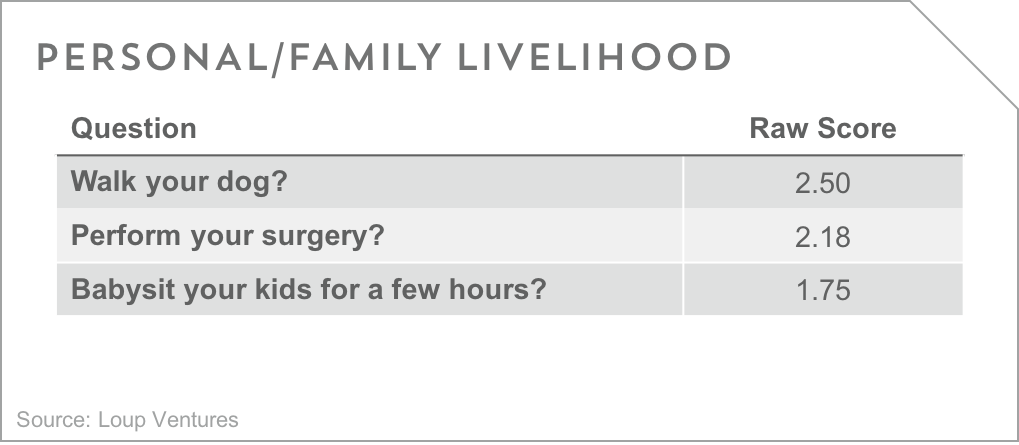
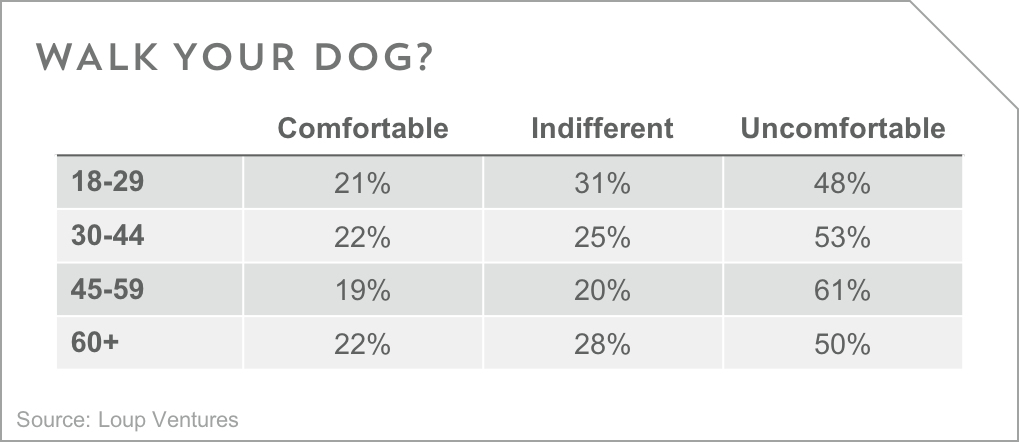

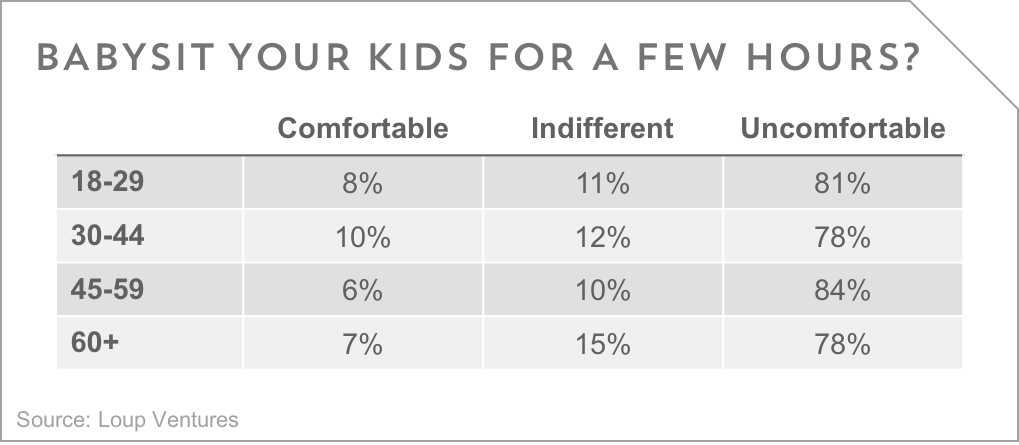 Professional Services. Survey respondents were generally uncomfortable in relying on robots to perform professional services aside from personal training. We feel this again relates to risk. While there is no mortal risk to poorly performed taxes or legal services, there is a risk of financial cost from those failures. The 18-29 year old demographic showed the most comfort using robo-accountants or robo-lawyers.
Professional Services. Survey respondents were generally uncomfortable in relying on robots to perform professional services aside from personal training. We feel this again relates to risk. While there is no mortal risk to poorly performed taxes or legal services, there is a risk of financial cost from those failures. The 18-29 year old demographic showed the most comfort using robo-accountants or robo-lawyers.
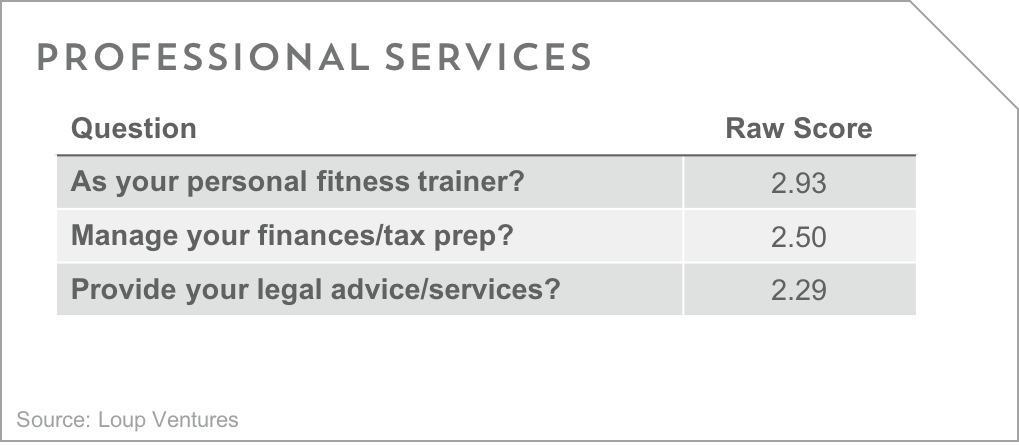

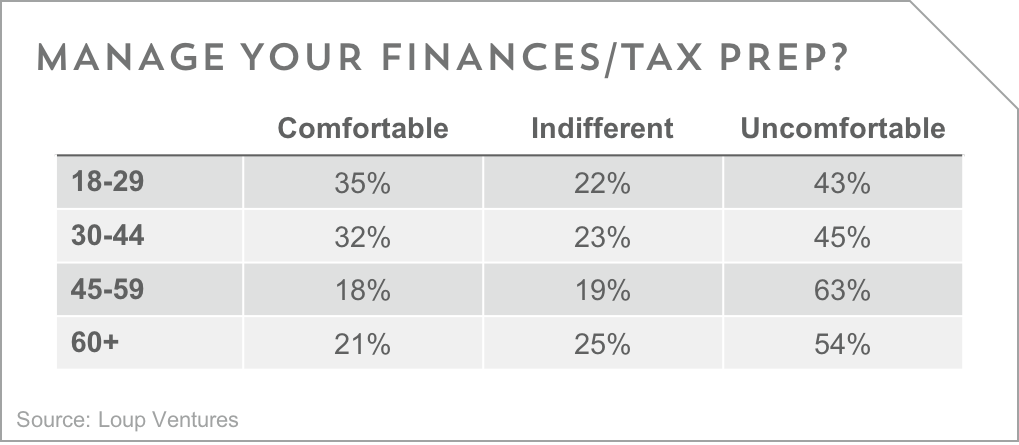
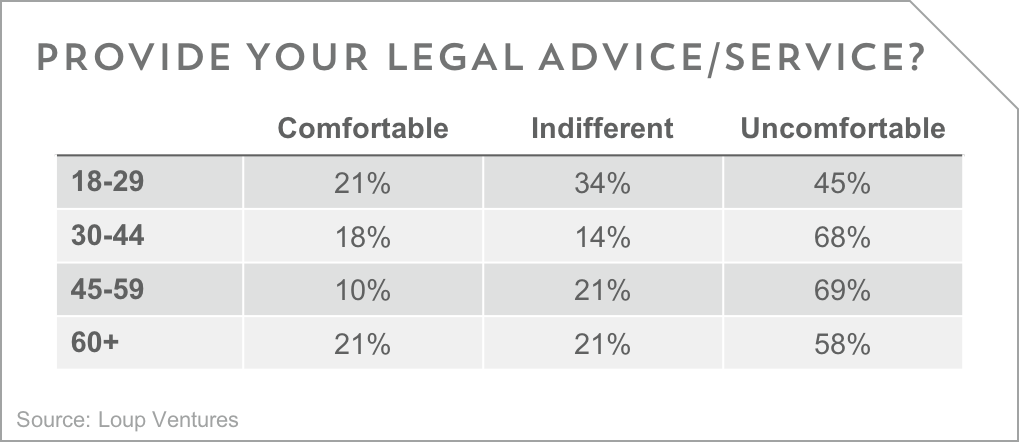 Overall, we have some trust to build between consumers and robots to get to the automated future we envision, particularly with tasks perceived to be “dangerous.” As humans come to accept that robots can perform almost all “dangerous” tasks with greater safety than humans, the associated comfort levels should rise.
Overall, we have some trust to build between consumers and robots to get to the automated future we envision, particularly with tasks perceived to be “dangerous.” As humans come to accept that robots can perform almost all “dangerous” tasks with greater safety than humans, the associated comfort levels should rise.
Disclaimer: We actively write about the themes in which we invest: artificial intelligence, robotics, virtual reality, and augmented reality. From time to time, we will write about companies that are in our portfolio. Content on this site including opinions on specific themes in technology, market estimates, and estimates and commentary regarding publicly traded or private companies is not intended for use in making investment decisions. We hold no obligation to update any of our projections. We express no warranties about any estimates or opinions we make.